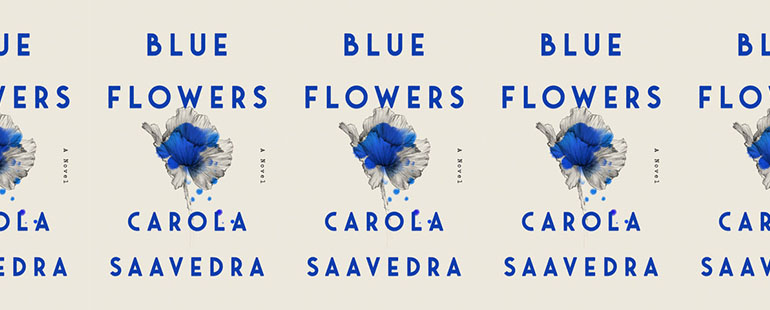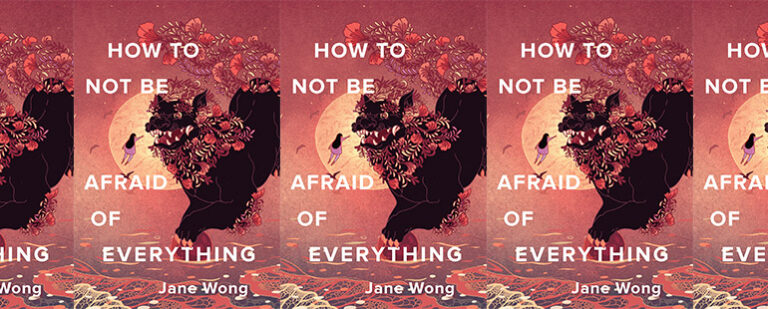Blue Flowers by Carola Saavedra

Blue Flowers
Carola Saavedra (translated from the Portuguese by Daniel Hahn)
Riverhead Books (Penguin Random House) | January 28, 2020
From Juan Gabriel Vásquez to Paulina Flores, Samanta Schweblin to Daniel Galera, the wave of emerging Latin American writers continues to swell into English-language markets worldwide, thanks to a cadre of stellar translators. Now another rising Brazilian talent makes her English début with a slender yet stirring tale that piques the head as well as the heart (and possibly a few erogenous zones as well), subverting narrative expectations, blurring the line between foreground and fantasy.
Carola Saavedra’s mesmerizing Blue Flowers, skillfully translated from Portuguese by Daniel Hahn, opens with a letter from a young woman to her former lover, a handsome yet aloof man who has abruptly broken off their relationship. The woman, known only as A., is distraught. The letter arrives in the mailbox of Marcos, intended for the previous occupant of his apartment. Recently divorced, Marcos works in a Brazilian city (possibly Rio de Janeiro) and shares custody of his three-year-old daughter, Manuela, with his ex-wife, an architect. Their post-conjugal dealings are brisk, business-like; everyone goes along to get along. It’s January, the height of summer; Marcos is carrying on a desultory romance with Fabiane, who is beautiful yet bourgeois and boring. In his malaise he marvels at how the women in his life, including Manuela, seem to meld together.
But another woman looms just out of sight. Once A.’s letters arrives each day in their slim blue envelopes, Marcos fixates on finding her, skipping out on his job, avoiding voicemails from Fabiane and his ex. He becomes a voyeur in A.’s tragedy, his collapse mirroring hers.
Saavedra brilliantly plays with the epistolary form, crafting the letters into a story-within-a-story, building on A.’s trysts with her lover, her crippling heartbreak. There’s a hint of physical abuse as A.’s anguish blooms within her: “In biology class we learned that blood is blue. . .it only acquires the red tinge when in contact with the oxygen in the atmosphere. . .We only see blue blood when we take a close look at our veins, hidden beneath a veil of skin and arteries. . .There’s something mysterious inside our bodies, don’t you think? And violence, violence is nothing more than an approach toward this mystery, this unimaginable thing contained inside us.”
Blue Flowers starts out slow, but the pace quickens as Saavedra toggles back and forth between A.’s letters and Marcos’ internal struggles. The erotic storyline peels away to reveal the author’s underlying preoccupation: the chasm of miscommunication between men and women. Marcos feels extraneous, gated outside the feminine circle, as when his ex-wife picks up Manuela from his apartment: “There he stood with the door open, as they waited for the elevator, Mother and daughter, and later they would be meeting the grandmother. A kind of female clan, with a matriarchal lineage, a bond that united them and made them mysterious, inaccessible—he just stood there, forever excluded from their pact.”
For her part A. views her lover as Other, walled off in brooding solitude. Each night they spend together leaves her alone in her body, grappling with surges of adoration and loathing; as she writes to him, “In bed, next to you, I hardly moved, my body had become an ovum, a closed structure, my whole body a spiral turning in on itself, silent, still; I avoided any gesture, any doubt, avoided the casual brush of your skin against mine. The brushing of your skin against mine, however lightly, would be a concession, forgiving you silently.”
It’s a testament to Saavedra’s daring that she explores our desires panoramically, careful not to judge. The novel is both visceral and spare, stitched with motifs—A.’s correspondence, a DVD rental store, a post office, a beautiful woman with long dark hair—and an allusion to a curious, Cubist-like film. Saavedra has written her own hypnotic version of Last Year at Marienbad, with touches of surrealism and straightforward storytelling, a beguiling portrait of need and want. As Marcos homes in on A., the novel startles with the inevitability of fate. Obsessive love is a theme as old as the Iliad, but here Saavedra gives it her own enigmatic twist, joining the ranks of Latin American authors who are transforming our literary landscape in vivid, thrilling ways.


